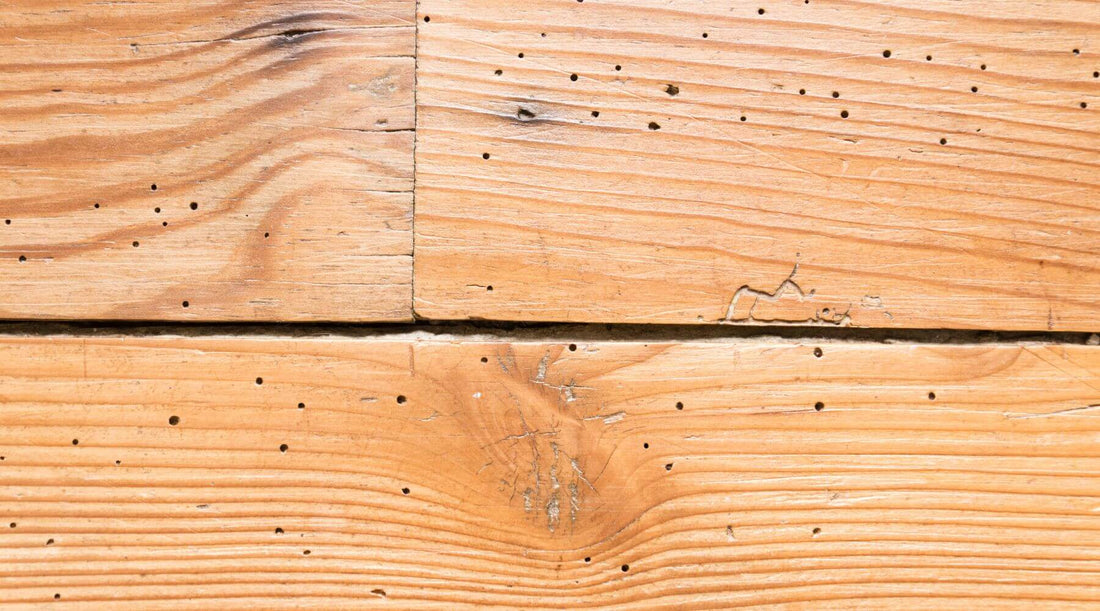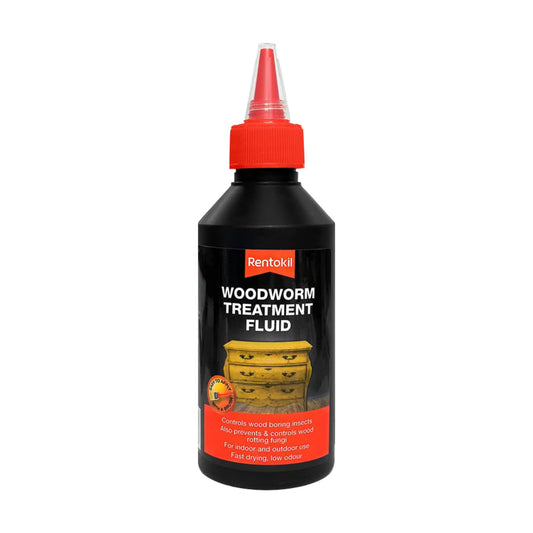
Top 5 DIY Tips for Treating Woodworm in Your Home
Share
Woodworm can become a major concern if you have wooden furniture or structural timber. This is because wood-boring insects such as woodworms can cause serious damage to them.
Thankfully, many woodworm infestations can be managed effectively with some simple DIY approaches. Here are our top five DIY tips for treating woodworms effectively yourself and protecting your home.
1. Identify the Signs of Woodworm Early
Before starting any type of treatment, it's important to confirm that woodworms are actually present. Common signs of woodworms include:
- Neat Round Holes: These exist in the wood and are typically around 2mm in width and result from where adult beetles have emerged from the wood.
- Fine Wood Dust: Also known as frass, these small piles of sawdust build up around the holes and may suggest the presence of active larvae inside.
- Fresh Wood Exposure: If holes reveal fresh wood, it's a sign that the infestation is active or recent.
If you notice any of these woodworm signs, it's important to take action quickly to prevent further damage.

2. Use Specialised Woodworm Treatment Products
Once you're sure that you're dealing with a woodworm infestation, we recommend treating the affected wood as soon as possible. We recommend using dedicated woodworm treatment solutions, commonly available in most DIY or hardware shops. Here's some tips on how to use it:
- Apply to All Surfaces: Use a brush or spray to coat visible and accessible surfaces. You must pay attention to both polished and unpolished areas.
- Inject Directly into Holes: Use an injector to apply the treatment fluid directly into the existing flight holes. This is more likely to target the larvae within the wood.
- Repeat as Necessary: Follow the instructions on the product's label carefully. It's common for multiple applications over several days to be needed for the most severe infestations.
This treatment works well, especially for wooden furniture. It can also be effective on structural wood when applied thoroughly.

3. Treat Structural Timbers with Extra Care
If you have concerns that woodworm may be affecting structural timbers such as floor joists, roof beams, or wall studs, DIY treatment may still be possible. However, you'll need to take extra special precautions and may still wish to seek professional advice. Here are some specific steps to follow:
- Clean Surface: Remove any insulation, dust, or debris to allow the treatment to reach the timber surface effectively.
- Protect Wiring and Pipes: Cover any wiring or water pipes in the area to avoid contamination from the chemicals used in the treatment.
- Apply the Treatment Solution: Coat all surfaces of the timber, including the undersides, with a woodworm treatment. It's important to ensure that it's designed for structural wood. Always follow the manufacturer's instructions carefully.
Once the treatment is complete, reinstall any insulation or coverings with care. This will help to avoid creating fire hazards or additional risks.

4. Keep Your Home Dry
Woodworms are drawn by moist, damp conditions around the home. As such, both prevention and treatment need to control moisture levels. We recommend the following steps to keep moisture down:
- Ensure Regular Ventilation: Open windows consistently to allow air in and use extractor fans if necessary. Use dehumidifiers in basements, attics as well as other damp areas to reduce humidity.
- Fix Leaks Promptly: Repair any leaks in pipes, plumbing, roofing, or windows to keep these vulnerable areas dry.
- Monitor Moisture Levels: Keep an eye out on the most vulnerable areas of your home including structural timbers. Also, consider using a moisture meter to ensure humidity levels stay low.
Keeping your home dry makes it less inviting for woodworms and similar boring insect pests.

5. Regularly Inspect and Maintain Wooden Furniture and Structures
Preventative maintenance can help stop a woodworm infestation from occurring. Here are a few tips:
- Inspect Wooden Furniture: Before taking used wooden furniture home, ensure you inspect it for signs of woodworm. Be particularly vigilant for flight holes and wood dust.
- Polish Wooden Furniture: Regularly polish furniture with an insecticidal polish. This creates a defensive barrier against woodworms and similar wood-boring insects.
- Check Structural Timbers: Conduct annual checks on exposed structural wood. Don't forget to look in attics, basements, and crawl spaces. Early detection is important as it helps prevent costly repairs.

When to Seek Professional Help
DIY woodworm control methods can be highly effective. This is especially true when you are managing small woodworm infestations. However, if you're dealing with something more serious you may wish to seek professional assistance.
Examples of more serious issues include extensive damage and weakened beams. You may also need to be wary of other wood-boring insects such as the Death Watch Beetle or House Longhorn Beetle. In all such cases, we recommend calling in a specialist. They can offer thorough surveys and recommend long-term treatment solutions, often with guarantees.
Final Thoughts
By taking a proactive approach to treating woodworm infestations, you can protect your home. It's essential to identify infestations early, use effective treatments and keep your home dry to reduce the risk of woodworms. For larger infestations, professional help can ensure a thorough and safe resolution.
With these DIY tips, you are well-equipped to manage woodworms and safeguard your home against future infestations.
You may also find our expert guide useful if you want to learn more about getting rid of woodworms from your home or workplace.

